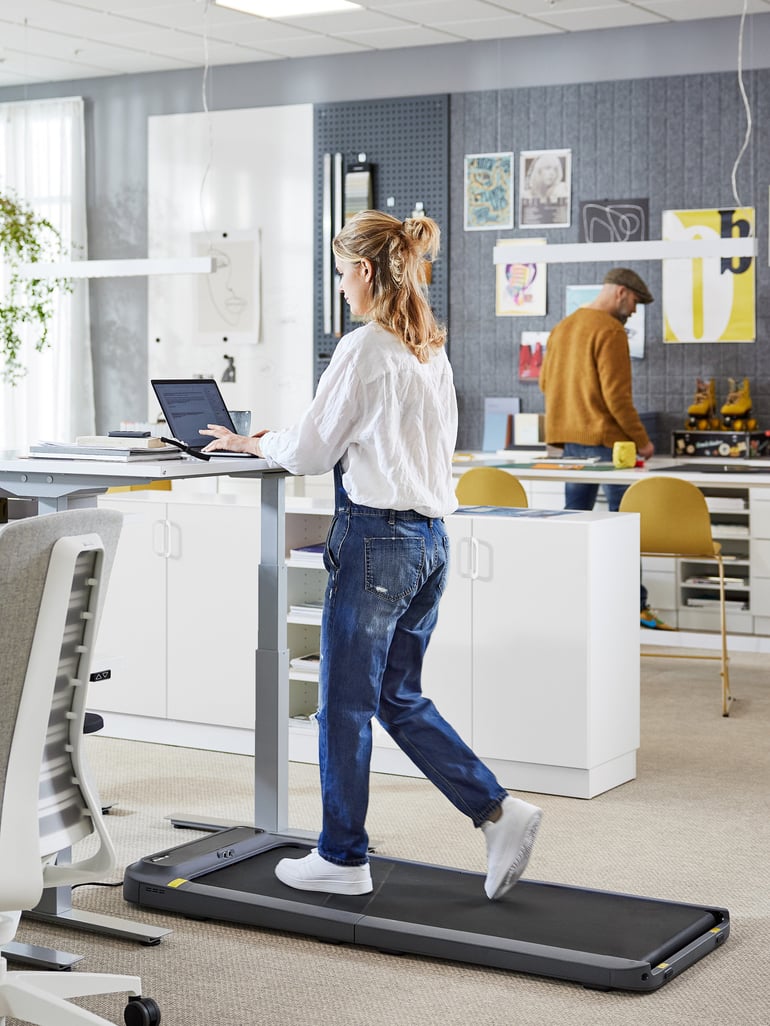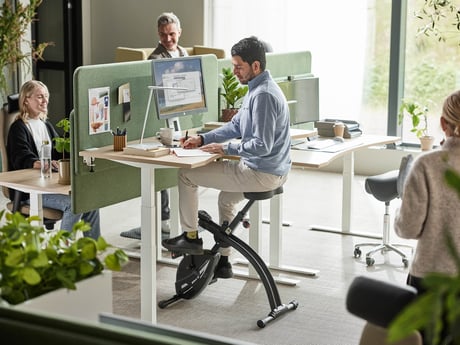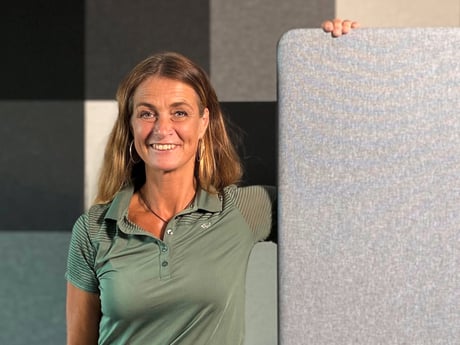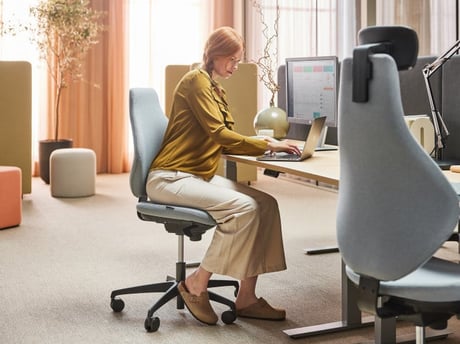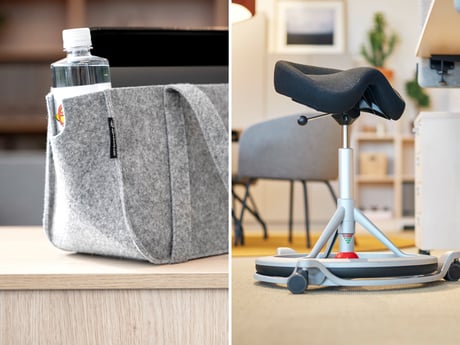- AJ Products UK
- Blog: Tips to Inspire Happiness at Work
- Tips & trends
- 4 myths about exercise at work
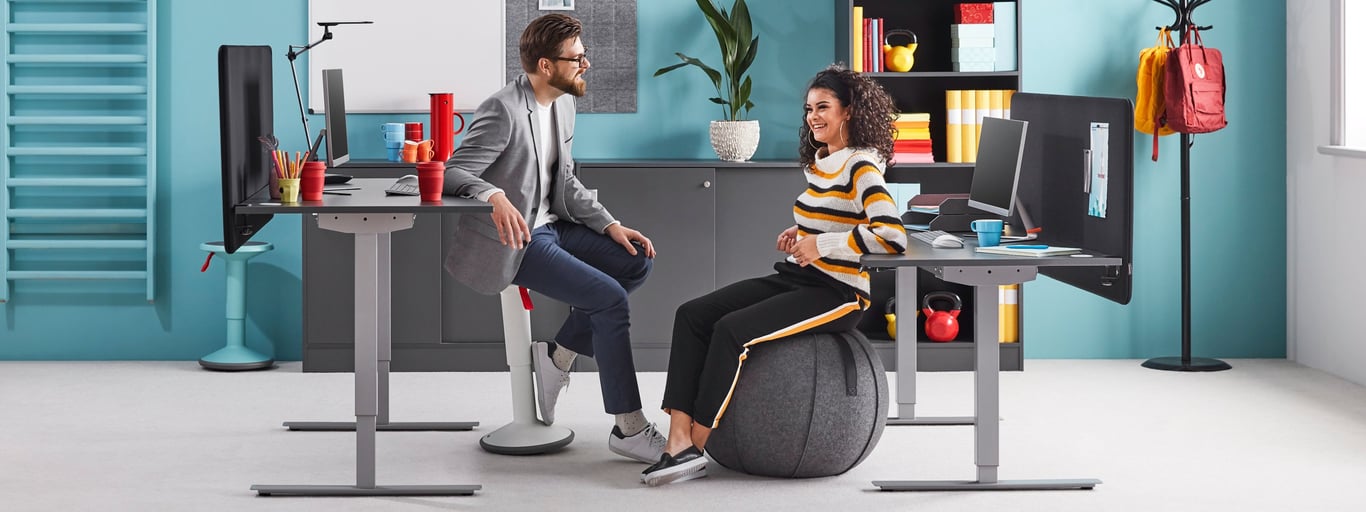
4 myths about exercise at work
1. If I exercise after work it doesn’t matter that I sit all day
FALSE. Regular gym sessions are great, but unfortunetly, they don’t undo the effects of prolonged sitting during the working day. A sedentary job still has harmful consequences that even high-intensity workouts can’t completely make up for. Sitting for eight hours or more can increase the risk of weight gain, type 2 diabetes, high blood pressure and cardiovascular disease - regardless of how often you exercise after hours.
To protect your health, it’s essential to build exercise at work into your daily routine. That doesn’t mean hitting the gym between meetings - simple changes like alternating between sitting and standing, taking short active breaks, or walking to speak to a colleague instead of emailing can make a real difference. You could also try using a desk treadmill or desk bike to keep your body moving while you work. These small, sustainable steps help improve circulation and regulate blood sugar throughout the day.
Explore active seating options
2. Low intensity exercise burns more calories than high intensity
FALSE. It’s a common misconception that slower, low-intensity exercise burns more calories than high-intensity training. In reality, both can be effective - but in different ways. According to sports physiologist Mikael Mattsson at the University of Gymnastics and Sports in Stockholm, short, intense workouts tend to burn more energy during and after exercise, thanks to what’s known as the afterburn effect. So while a longer, gentle session can burn calories, high-intensity training continues to deliver benefits even after you’ve stopped.
That said, a busy workday doesn’t always leave time for a full workout – and that’s where exercise at work comes into its own. You don’t need an hour at the gym to stay active. There are plenty of low-intensity movements you can do right at your desk. For instance, try holding your legs straight out in front of you for a minute or doing seated calf raises while answering emails. These simple exercises may not leave you breathless, but they help activate your muscles, improve circulation and keep your energy up throughout the day.
Whether it’s a quick desk stretch or a brisk walk at lunch, the key is to make movement a regular part of your working routine.
3. Five minutes of exercise doesn’t make a difference
FALSE. While health guidelines recommend at least 30 minutes of physical activity a day, many people struggle to fit that in around work, school runs, cooking and and running other errands. But here’s the good news: even a few minutes of exercise do more than none. In fact, short bursts of exercise throughout the day can have real health benefits.
If you’re working in an office, exercise at work doesn’t need to be complicated. Try a few squats or desk push-ups during a break, take the stairs instead of the lift, or add an extra lap around the building on your way back from lunch. Even a brisk five-minute session can increase your heart rate, improve circulation and help your body burn more energy.
Don’t worry if you work up a sweat - when you push your muscles, even briefly, your body responds as if it’s preparing for more intense activity. This can lead to improved oxygen intake, reduced blood fat levels and better insulin sensitivity, all of which support long-term health.
And remember: everyone is different. The most effective form of movement is the one that suits your body, your energy levels and your lifestyle. So experiment, and find what works best for you - even if it’s just five minutes at a time.
4. Caffeine can lead to weight loss
FALSE. There’s no solid scientific evidence that caffeine directly causes weight loss. While it can give your metabolism a temporary boost, the effect is minimal and doesn’t lead to any meaningful long-term impact. What’s more, many people add milk, sugar or syrup to their coffee - all of which add calories and could contribute to weight gain if consumed regularly.
That said, caffeine can give you more energy, which might make you more inclined to move during the day. And if you’re someone who drinks several cups of coffee and your machine’s not nearby, the walk back and forth could contribute to exercise at work in a small but positive way.
So while coffee itself isn’t a weight-loss tool, the added movement and energy it encourages can support a more active office routine. The takeaway? Don’t rely on caffeine for results - focus on incorporating regular movement and active habits into your workday instead.

